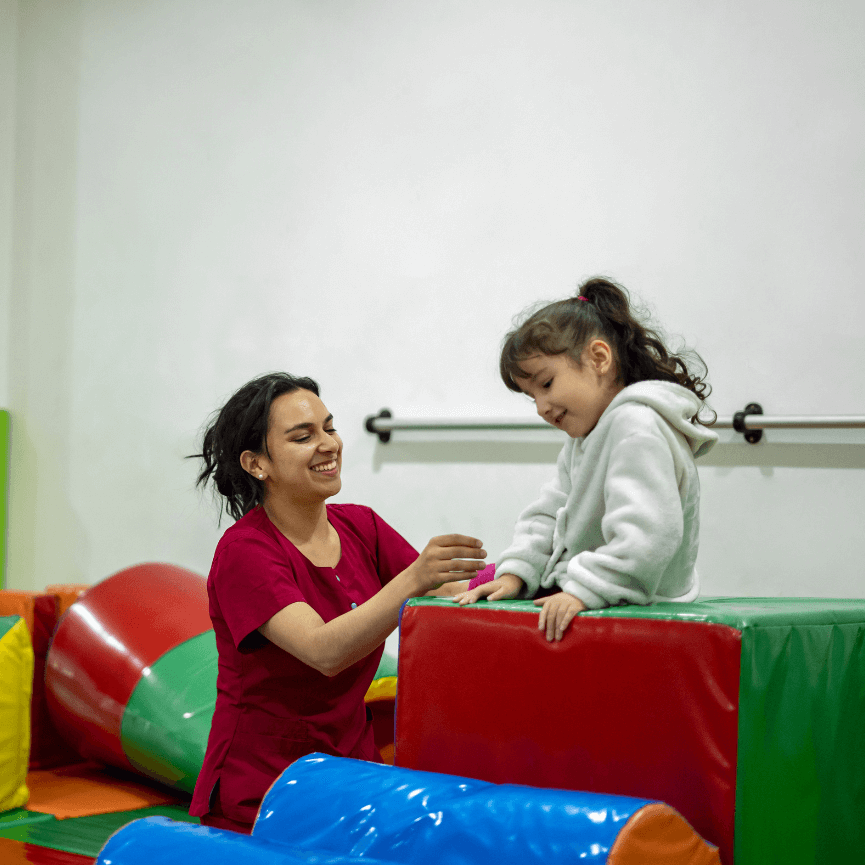
- Oct 29, 2024
- 11 Views
- 0 Comments
Occupational Therapy Services For Children With Autism
The Vital Role of Occupational Therapy in Supporting Sensory and Motor Skills
Occupational therapy (OT) has become one of the most impactful interventions for children diagnosed with autism spectrum disorder (ASD). For families navigating the challenges and opportunities that come with raising a child with autism, OT offers a path to developing essential life skills and independence. This article explores the role of occupational therapy in helping children with autism achieve greater autonomy, manage sensory processing challenges, and build meaningful social connections.
What Is Occupational Therapy?
Occupational therapy is a therapeutic practice focused on helping individuals of all ages develop the skills they need to perform everyday tasks effectively. From fine motor skills to sensory integration, OT focuses on enhancing each person’s ability to engage in meaningful activities with greater ease and confidence. For children with autism, OT sessions are designed to address specific challenges and improve overall quality of life.
How Occupational Therapy Benefits Children With Autism
Occupational therapy offers children with autism a variety of benefits that span physical, emotional, and social growth. OT can help children develop improved motor skills, regulate sensory responses, and learn adaptive techniques that support independence. Through targeted activities, children can better navigate their environment, resulting in reduced frustration and enhanced self-esteem.
Occupational Therapy Goals for Children With Autism
Occupational therapists set goals based on the unique needs of each child, but common objectives include:
- Improving sensory processing to help manage overstimulation or under-responsiveness
- Developing motor skills for better control and coordination
- Building social and communication skills to support interactions with peers and caregivers
- Fostering independence in daily tasks like dressing, eating, and hygiene
Each goal is carefully crafted to support the child’s growth in a holistic way.
Areas of Focus in Occupational Therapy for Autism
Fine Motor Skills
Improving fine motor skills is essential for activities like writing, buttoning clothing, and manipulating small objects. OT helps children refine these skills for better control and precision.
Gross Motor Skills
Gross motor skill development involves activities that enhance balance, coordination, and strength. These exercises help children navigate their physical space with confidence.
Sensory Processing
Children with autism often experience heightened or reduced sensitivity to sensory input. OT aims to help children become more comfortable and less overwhelmed by sensory information.
Social Skills and Communication
Social skills are crucial for fostering connections, and OT incorporates exercises that encourage positive interactions and communication.
Self-Care Skills
Developing independence in daily tasks is one of the most rewarding aspects of OT for children with autism. Therapists work on skills like dressing, grooming, and feeding, empowering children to take pride in their autonomy.
Techniques and Strategies Used in Occupational Therapy
Sensory Integration Therapy
This therapy helps children process sensory input more effectively, making it easier for them to engage in daily activities.
Play-Based Therapy
Using play as a therapeutic tool, OT engages children in enjoyable activities that also build motor skills, attention, and social behaviors.
Adaptive Skill Training
Adaptive skill training focuses on teaching children practical strategies for managing everyday tasks independently.
Visual and Auditory Integration
These techniques are designed to help children with autism respond more appropriately to visual and auditory stimuli in their environment.
Behavioral and Emotional Regulation
OT helps children develop emotional awareness and learn calming techniques that improve their ability to self-regulate.
What to Expect in an Occupational Therapy Session
A typical OT session for a child with autism includes a series of structured and play-based activities. Therapists may use sensory toys, obstacle courses, and games to engage the child actively. Families play an integral role, often participating to help reinforce progress at home.
Finding the Right Occupational Therapist for Your Child
When looking for an occupational therapist, it’s essential to seek out professionals who specialize in autism and have relevant credentials. A few questions to consider:
- What experience does the therapist have working with children with autism?
- Are they certified in autism-specific therapy techniques?
- How will they tailor the therapy to meet my child’s unique needs?
When to Consider Occupational Therapy for a Child With Autism
If your child shows difficulty with tasks like sitting still, interacting socially, or performing age-appropriate self-care, occupational therapy might be beneficial. Starting therapy early can maximize developmental benefits, though OT remains effective for older children as well.
The Role of Parents and Caregivers in OT
Parents and caregivers are essential partners in the OT process, reinforcing skills outside of therapy sessions. Following up with suggested exercises at home, attending sessions, and maintaining open communication with the therapist will greatly benefit the child’s development.
Challenges and Misconceptions About Occupational Therapy in Autism
Some believe OT alone can resolve all autism-related challenges, but it’s essential to understand that OT is often most effective when combined with other therapies. Each child’s progress is unique, and setting realistic expectations will help create a positive experience for both the child and family.
Case Studies and Success Stories in Occupational Therapy
Occupational therapy has empowered countless children with autism to achieve goals once thought impossible. For instance, a young boy who initially struggled with motor coordination learned to tie his shoes independently, building his confidence and sense of autonomy.
Comparing Occupational Therapy With Other Autism Therapies
OT is often used alongside therapies like Applied Behavioral Analysis (ABA) and speech therapy to create a comprehensive approach to autism intervention. Each therapy brings unique benefits, and combining them can offer more substantial progress.
The Future of Occupational Therapy for Autism
As research and technology advance, occupational therapy for autism continues to evolve. Emerging tools, such as virtual reality and sensory-friendly devices, show promise in enhancing OT’s impact on children with autism.
Occupational therapy opens up a world of possibilities for children with autism, empowering them to engage more fully in daily activities and navigate social environments. With the support of skilled therapists and dedicated families, children with autism can lead more independent, fulfilling lives.


Comments - 0 comments till now